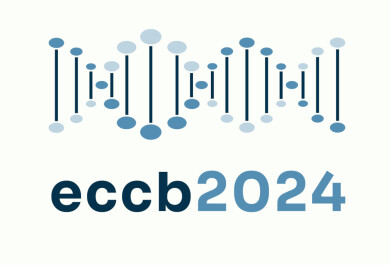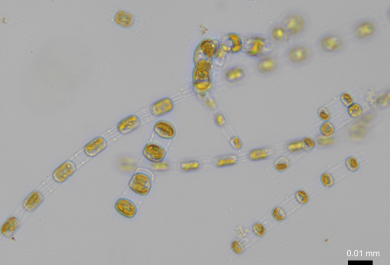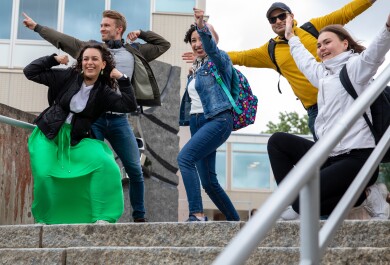Study Improving Silicon Surface Aims to Break into the Market
Teresa Lekari and Zahra Jahanshah Rad aim to combine research and business life. At the core of the projects is technology which can increase the lifetime of electronic devices.
Research Coordinator Teresa Lekari and Doctoral Candidate Zahra Jahanshah Rad have been working in the Co-Creation project since the beginning of 2020. Their research team is developing a research idea related to the passivation of silicon wafers together with companies. In this case, the research team does not need to go beneath the surface as the technology is focused on developing the silicon surface in particular.
Silicon is the most used material in the semiconductor industry. It is used in e.g. smartphones, laptops and solar cells. Jahanshah Rad notes that the electronic components of electronic devices, such as the chips in our cellphones, are getting smaller and smaller. This means that the role of surface is more important.
The technology developed by the research group aims to decrease the amount of defects on the silicon surface and to reduce the resulting leakage current. The technology has been experimented with an ultra-high vacuum system prototype.
– We have been able to reduce the leakage current by 300–400 percent. This means that for example, you will have a longer battery lifetime when you use your cell phone, tells Jahanshah Rad.
The carrier lifetime of solar cells can also be increased through surface science.
– Our results show that we have increased it by 200 percent. This means that we are able to increase the efficiency of solar cells. So, with the same amount of light, we receive more electricity, explains Jahanshah Rad.
Aiming to Find a Business Partner
Last year, Lekari and Jahanshah Rad worked in the SISUPROCO TUTLI project funded by Business Finland. The aim was to commercialise the research. During the project, the research team made contacts with the industry but did not find an actual business partner. They found out that the vacuum system Jahanshah Rad had designed and built was too small for industrial needs.
Lekari and Jahanshah Rad decided to apply for a new project funding and prove that their method can be also used for larger silicon wafers. The current Co-Creation project is a six month funding which aims to a shared Co-Innovation project of research organisations and companies.
– Receiving Co-Innovation funding also depends on the companies’ research interests and requirements. The main goal is to find a company who is willing to buy the technology or a license to it. When we find a customer, we will be able to establish a company of our own, says Lekari.
– In Co-Innovation, an ecosystem is built. The system that includes companies and industry, as well as universities and the academic sector. They all work in collaboration and the academic sector tries to find answers to the challenges of the companies and industry. This will hopefully result in progress on both sides, adds Jahanshah Rad.
At the moment, the research team is waiting for the decision on the new Research to Business funding that Jahanshah Rad and Lekari applied for at the beginning of this year. The projects offer a possibility to utilise and develop the technology for industrial needs, even though there is no funding to start a business yet.
– It is also good that through these projects, we have already created connections to different companies in the field. This will make future collaboration easier, says Lekari.
Motivating Team Spirit Enables Successes
At the moment, Lekari is preparing the Co-Innovation project with Development Manager Paavo Kosonen. Jahanshah Rad is working in the group that is lead by Professor Kalevi Kokko. The experimental group is lead by Assistant Professor Pekka Laukkanen.
Jahanshah Rad and Lekari thank their colleagues for great team spirit and motivating work environment. Jahanshah Rad points out that the members of their group motivate each other a lot and team work has enabled their successes.
– This would not be possible without our group. Everyone in our group is happy to help each other.
In normal circumstances, Jahanshah Rad and Lekari would be sharing a work room. Now, they are working remotely, as many people at the moment are, but are often having meetings with each other, the research team and with companies.
Jahanshah Rad hopes that the gap between industry and research would narrow down. Therefore, she finds the Research to Business projects important.
– Big companies also need more information about the basic research conducted at universities. When talking about physics, the universities’ point of view can solve many problems.
Lekari and Jahanshah Rah both note that often people are unaware of what it means to study physics and what career options are available with a degree in physics. There are, in fact, a lot of vacancies in the industry.
– For those who love science, physics is the place to be. You can find out what is going on in your cell phone or in the universe. When we find out what is happening, we can also develop it, summarises Jahanshah Rad.




